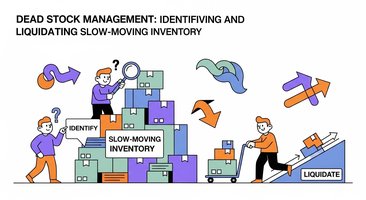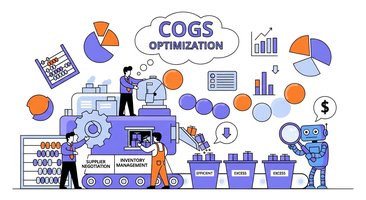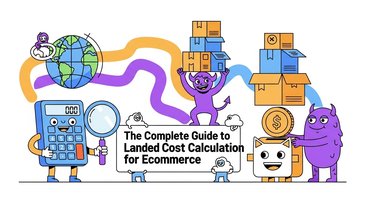Bundle and kit inventory accounting separates sophisticated ecommerce operations from those struggling with complex product structures and profitability analysis. Companies with advanced bundle management achieve 20-35% better margin visibility, improved pricing accuracy, and enhanced inventory optimization compared to those using simplified approaches.
Yet 64% of ecommerce businesses struggle with bundle and variation accounting, leading to pricing errors averaging $45,000 annually in lost profits and inventory inefficiencies. The complexity multiplies as product catalogs expand and customer demand for customization increases.
Modern ecommerce success increasingly depends on offering product combinations, customization options, and value-added bundles that differentiate businesses from competitors. However, these strategies create accounting complexity that many businesses fail to address properly, leading to hidden losses and strategic disadvantages.
The Complexity Challenge:
Bundle accounting involves multiple interconnected components that affect every aspect of inventory management. Cost allocation across bundle components requires sophisticated tracking that maintains accuracy while providing actionable insights. Inventory depletion patterns become complex when individual components sell separately and as bundle parts.
Profitability analysis requires understanding which bundles generate the highest returns and how component costs affect overall margins. Pricing strategies must consider individual component values, bundle discounts, and competitive positioning while maintaining profitability targets.
This comprehensive guide reveals proven strategies for managing complex product structures, optimizing bundle profitability, and leveraging platforms like Klavena's complex product handling to maintain accuracy across sophisticated product catalogs.
Understanding Complex Product Structures
Bundle and kit inventory accounting requires systematic approaches that handle multiple product relationships while maintaining accurate cost tracking and profitability analysis.
Product Structure Types:
Simple Bundles combine multiple existing products into value packages sold at discounted prices. These structures maintain separate inventory tracking for each component while creating new SKUs for bundle sales. Cost allocation remains straightforward as each component retains its individual cost basis.
Manufacturing Kits involve assembling components into new products that may require additional labor, packaging, or processing. These structures require work-in-process tracking and conversion cost allocation that reflects the value-added activities involved in kit assembly.
Configurable Products allow customers to select options and variations that affect pricing and inventory requirements. Base products with option additions create complex pricing structures that must be tracked accurately for profitability analysis and inventory planning.
Product Variations include size, color, style, and feature differences that share common base costs but have unique inventory requirements. Variation-specific costs for materials, packaging, or processing must be allocated appropriately to maintain accurate profitability analysis.
Accounting Complexity Factors:
Component Relationships determine how individual items interact within bundle structures. One-to-many relationships occur when single components appear in multiple bundles. Many-to-many relationships create complex interdependencies that require sophisticated tracking systems.
Inventory Allocation becomes challenging when components sell individually and as bundle parts. Reserved inventory for bundle fulfillment must be balanced against individual component sales opportunities. Substitution rules may allow alternative components when primary options are unavailable.
Cost Basis Determination requires decisions about how to allocate costs across bundle components. Proportional allocation based on individual component values provides one approach. Strategic allocation may emphasize higher-margin components or promotional objectives.
Bundle Cost Allocation Methods
Effective bundle accounting requires systematic cost allocation approaches that provide accurate profitability insights while supporting strategic pricing and inventory decisions.
Proportional Allocation Strategies
Value-Based Allocation:
Proportional allocation distributes bundle costs based on individual component retail values or standard costs. This method provides logical cost distribution that reflects the relative value contribution of each component to the overall bundle.
Calculation methodology divides each component's individual value by the total bundle value to determine allocation percentages. These percentages are then applied to the bundle's total cost to determine component-specific cost allocations.
The approach works well when component values are well-established and market pricing provides clear benchmarks for individual items. Margin consistency across components ensures allocation accuracy and strategic alignment.
Cost-Based Allocation:
Alternative allocation methods use actual component costs rather than retail values to determine proportional distribution. This approach may provide more accurate cost accounting but could distort profitability analysis if components have significantly different margin structures.
Historical cost data provides the foundation for cost-based allocation, ensuring allocation reflects actual investment in each component. Standard cost systems can simplify allocation calculations while maintaining reasonable accuracy for most applications.
Strategic Allocation Approaches
Margin Optimization Allocation:
Strategic allocation methods consider business objectives and competitive positioning rather than purely mathematical distribution. High-margin components might receive lower cost allocations to maintain attractive pricing and volume sales.
Promotional components included for competitive reasons might absorb higher cost allocations to ensure bundle profitability meets targets. Loss leader strategies can be implemented through allocation adjustments that support overall business objectives.
Market-Based Allocation:
Competitive analysis and market positioning considerations can influence allocation decisions to support strategic pricing and positioning objectives. Customer value perception may justify allocation approaches that differ from purely cost-based methods.
Brand strategy considerations might influence allocation to support premium positioning or value messaging that aligns with overall marketing objectives and customer expectations.
Klavena's Bundle Management
Automated Cost Calculation:
Klavena automatically calculates bundle costs using configurable allocation methods that align with business objectives and accounting requirements. Real-time updates ensure cost allocations remain accurate as component costs change or bundle compositions are modified.
Multiple allocation methods can be applied simultaneously to support different reporting requirements and analytical needs. Scenario modeling capabilities allow businesses to evaluate different allocation approaches and their impact on profitability and pricing strategies.
Component Tracking Integration:
Klavena maintains complete component-level visibility while providing bundle-level reporting that supports both operational management and strategic analysis. Inventory depletion tracking ensures accurate availability calculations across individual and bundle sales channels.
Substitution management handles alternative components and configuration changes while maintaining cost accuracy and profitability tracking. Version control capabilities track bundle changes over time and their impact on costs and margins.
Kit Assembly and Manufacturing Accounting
Kit assembly operations require specialized accounting approaches that capture conversion costs while maintaining accurate component tracking and profitability analysis.
Work-in-Process Management
Assembly Cost Tracking:
Kit assembly involves direct labor costs for workers who combine components into finished products. Time tracking systems capture labor hours associated with specific kits or assembly batches to ensure accurate cost allocation.
Overhead allocation includes facility costs, equipment depreciation, and supervisory labor that support assembly operations. Activity-based costing methods can provide more accurate overhead allocation based on actual resource consumption patterns.
Quality control costs include inspection labor, testing materials, and rework expenses associated with ensuring kit quality standards. These costs should be allocated appropriately to maintain accurate product costing and pricing decisions.
Conversion Cost Allocation:
Standard costing systems can simplify kit accounting by establishing predetermined rates for labor and overhead allocation. Actual cost systems provide more accuracy but require sophisticated tracking and allocation mechanisms.
Batch costing approaches allocate conversion costs across production runs or assembly batches, providing reasonable accuracy with manageable administrative complexity. Job costing methods track costs for specific orders or customer requirements.
Inventory Valuation Considerations
Component Consumption Tracking:
Kit assembly requires accurate tracking of component consumption to maintain inventory accuracy and cost allocation precision. Bill of materials (BOM) systems define component requirements and consumption patterns for each kit configuration.
Waste and scrap tracking ensures complete cost capture and accurate profitability analysis. Yield calculations help optimize assembly processes while maintaining accurate cost accounting for completed kits.
Finished Goods Valuation:
Completed kits require comprehensive cost accumulation that includes component costs, conversion costs, and allocated overhead expenses. Standard vs. actual cost variances should be analyzed and allocated appropriately to maintain accurate inventory valuation.
Quality grades or specification levels may require different cost treatments and inventory classifications. Packaging and labeling costs should be included in finished goods valuation to ensure complete cost capture.
Variation Management and SKU Optimization
Product variations create inventory complexity that requires systematic management approaches to maintain accuracy while optimizing operational efficiency and customer satisfaction.
Variation Hierarchy Structure
Base Product Definition:
Master products define common characteristics and cost elements shared across all variations. Base costs include design, development, and common manufacturing expenses that benefit all variations regardless of specific configuration.
Shared components and common processes should be identified and costed at the base level to avoid duplication and ensure accurate cost allocation across variations. Brand and marketing costs often apply to entire product families rather than individual variations.
Variation-Specific Elements:
Incremental costs for materials, labor, or processes that differ between variations must be tracked separately to maintain accurate profitability analysis. Size-based costs might include additional materials or special handling requirements.
Color and style variations may require unique materials, dyes, or finishing processes that affect individual variation costs. Feature additions or premium options should be costed separately to support accurate pricing and profitability analysis.
SKU Rationalization Strategies
Performance Analysis:
Sales velocity by variation helps identify high-performing and low-performing options that may require strategic attention. Profitability analysis reveals which variations contribute most to overall business success and resource allocation decisions.
Inventory turnover by variation identifies slow-moving options that tie up working capital and create carrying cost burdens. Customer preference analysis helps prioritize variations that provide the most value and satisfaction.
Cost-Benefit Optimization:
Complexity costs associated with managing multiple variations should be weighed against revenue benefits and customer satisfaction improvements. Operational efficiency may improve by reducing variation count while maintaining customer choice and market coverage.
Supply chain simplification through variation reduction can reduce costs while improving service levels and inventory management effectiveness. Focus strategies on high-performing variations can improve profitability while reducing complexity.
Profitability Analysis and Optimization
Comprehensive profitability analysis for complex product structures requires sophisticated approaches that consider all cost components while providing actionable insights for optimization.
Bundle Performance Metrics
Margin Analysis by Bundle:
Gross margin calculation for bundles requires accurate cost allocation and pricing analysis that considers all components and assembly costs. Contribution margin analysis helps identify bundles that contribute most to fixed cost coverage and profit generation.
Margin trends over time reveal how bundle profitability changes due to cost increases, competitive pressure, or market evolution. Comparative analysis across bundles helps identify optimization opportunities and strategic priorities.
Component Contribution Analysis:
Individual component profitability within bundles reveals which items drive overall bundle success and which may require attention or replacement. Cross-subsidization analysis identifies how profitable components support less profitable items for strategic reasons.
Substitution impact analysis evaluates how component changes affect overall bundle profitability and customer acceptance. Optimization modeling helps identify component combinations that maximize profitability while maintaining customer value.
Customer and Channel Analysis
Customer Segment Profitability:
Bundle preferences by customer segment reveal which combinations provide the most value and satisfaction for different customer types. Price sensitivity analysis helps optimize bundle pricing and discount strategies for maximum profitability.
Purchase pattern analysis identifies cross-selling and upselling opportunities that can improve overall customer profitability and lifetime value. Retention analysis reveals how bundle purchases affect customer loyalty and repeat business.
Channel Performance Analysis:
Channel-specific costs for bundle fulfillment and marketing should be included in comprehensive profitability analysis. Marketplace fees and platform costs vary significantly between channels and affect net bundle profitability.
Customer acquisition costs by channel and bundle type help optimize marketing spend and channel strategy decisions. Service level requirements by channel may affect fulfillment costs and profitability calculations.
Technology Integration and Automation
Modern bundle and variation management requires sophisticated technology integration that provides accurate tracking while supporting operational efficiency and strategic analysis.
System Architecture Requirements
Data Model Complexity:
Hierarchical product structures require database designs that efficiently handle parent-child relationships while maintaining performance and query flexibility. Many-to-many relationships between components and bundles create complexity that requires careful system design.
Version control capabilities ensure historical accuracy and audit trails for bundle changes and cost modifications. Integration points with accounting, inventory, and order management systems must maintain data consistency and accuracy.
Real-Time Processing:
Inventory availability calculations become complex when components participate in multiple bundles and individual sales. Real-time updates ensure accurate availability displays and prevent overselling situations.
Cost calculation automation reduces manual effort while improving accuracy and consistency across all product structures. Price optimization capabilities can automatically adjust bundle pricing based on cost changes and margin targets.
Klavena's Advanced Capabilities
Complex Product Handling:
Klavena manages sophisticated product structures through flexible configuration options that accommodate various bundle and variation requirements. Automated cost allocation ensures accuracy while reducing administrative burden and calculation errors.
Component substitution management handles alternative options and configuration changes while maintaining cost accuracy and customer satisfaction. Inventory optimization across complex structures ensures efficient working capital utilization and service level achievement.
Analytics and Reporting:
Comprehensive reporting capabilities provide insights into bundle performance, component profitability, and optimization opportunities. Drill-down analysis allows users to examine performance at bundle, component, and variation levels.
Predictive analytics help identify trends and optimization opportunities before they become critical issues. Scenario modeling supports strategic planning and optimization decision-making through what-if analysis capabilities.
Implementation Best Practices and Common Challenges
Successful implementation of complex product accounting requires careful planning, systematic execution, and ongoing optimization to achieve desired results.
Implementation Strategy
Phased Approach:
Pilot implementation with selected bundles or product families allows businesses to test processes and systems before full deployment. Complexity management through gradual expansion helps ensure successful adoption and user acceptance.
Data migration and system integration require careful planning to maintain accuracy while minimizing operational disruption. Training programs ensure users understand new processes and capabilities while maintaining productivity during transition.
Performance Monitoring:
Baseline establishment provides benchmarks for measuring improvement progress and success. Key performance indicators should be defined and tracked to ensure implementation achieves desired objectives.
Continuous optimization based on performance data and user feedback ensures ongoing improvement and adaptation to changing business requirements. Regular reviews identify opportunities for enhancement and strategic adjustment.
Common Implementation Challenges
Data Quality Issues:
Component cost accuracy forms the foundation for successful bundle accounting and requires careful attention during implementation. Historical data cleanup may be necessary to ensure accurate baseline establishment and system initialization.
Product structure definition requires clear business rules and consistent application to maintain system accuracy and user understanding. Change management processes ensure ongoing data quality and system integrity.
User Adoption Challenges:
Complexity perception can create resistance to new systems and processes, requiring careful change management and training approaches. Workflow integration must align with existing processes while providing clear benefits and improvements.
Performance expectations should be managed carefully to ensure realistic timelines and success criteria. Support systems must be available to address issues and questions during transition periods.
Strategic Applications and Advanced Strategies
Advanced bundle and variation management enables sophisticated strategies that create competitive advantages and drive business growth.
Dynamic Bundle Optimization
Market-Responsive Bundling:
Demand pattern analysis reveals opportunities for creating bundles that align with customer preferences and market trends. Seasonal optimization adjusts bundle compositions and pricing to maximize profitability during different periods.
Competitive response bundling creates value propositions that differentiate from competitors while maintaining profitability targets. Inventory optimization through bundling helps move slow-moving components while creating customer value.
Personalization and Customization:
Customer preference data enables personalized bundle recommendations that increase sales and customer satisfaction. Configuration tools allow customers to create custom bundles while maintaining profitability controls.
AI-driven optimization can automatically suggest bundle combinations based on customer behavior, inventory levels, and profitability objectives. A/B testing capabilities help optimize bundle compositions and pricing strategies.
Supply Chain Integration
Supplier Collaboration:
Component sourcing optimization considers bundle requirements and volume opportunities to negotiate better pricing and terms. Quality coordination ensures all components meet bundle standards and customer expectations.
Forecasting integration shares bundle demand patterns with suppliers to improve planning and reduce costs. Innovation partnerships can develop new components or configurations that enhance bundle value and differentiation.
Manufacturing Optimization:
Assembly efficiency improvements reduce conversion costs while maintaining quality standards. Capacity planning considers bundle demand patterns and assembly requirements to optimize resource utilization.
Quality systems ensure consistent bundle quality while minimizing rework and waste costs. Continuous improvement processes identify opportunities for cost reduction and efficiency enhancement.
Conclusion and Strategic Roadmap
Bundle and variation inventory accounting represents both a significant operational challenge and a strategic opportunity for ecommerce businesses seeking competitive advantage through product differentiation and customer value creation.
Key Success Factors:
Comprehensive cost visibility across all product structures provides the foundation for strategic pricing and optimization decisions. Technology infrastructure must support complex product relationships while maintaining accuracy and performance.
Process standardization ensures consistent treatment across all bundles and variations while allowing for strategic flexibility and optimization. Organizational capabilities in analysis and optimization drive ongoing improvement and competitive advantage.
Strategic Implementation Roadmap:
Phase 1: Foundation Building (Months 1-3)
Establish comprehensive product structure definitions and cost allocation methodologies that support business objectives. Implement technology infrastructure that provides scalable foundation for complex product management.
Phase 2: Advanced Capabilities (Months 4-6)
Deploy automated cost calculation and profitability analysis capabilities that provide real-time insights and optimization opportunities. Develop performance monitoring systems that track key metrics and identify improvement opportunities.
Phase 3: Strategic Optimization (Months 7-12)
Implement advanced analytics and optimization capabilities that drive competitive advantage and strategic differentiation. Develop continuous improvement processes that ensure ongoing optimization and adaptation to market changes.
Phase 4: Innovation and Growth (Months 13+)
Explore advanced strategies such as dynamic bundling, personalization, and AI-driven optimization that create sustainable competitive advantages. Build strategic partnerships and integration capabilities that enhance value creation and market positioning.
Klavena's Complex Product Solution:
Klavena provides comprehensive bundle and variation management that eliminates complexity while providing sophisticated analysis and optimization capabilities. The platform handles complex product structures seamlessly while providing actionable insights that drive profitability and strategic success.
Getting Started:
Klavena makes complex product accounting straightforward through proven implementation methodology, comprehensive training, and ongoing optimization support. The platform grows with business complexity while maintaining accuracy and providing strategic insights.
Bundle and variation complexity will only increase as customer expectations evolve and competitive pressures intensify. Start building advanced capabilities today – the operational efficiency and strategic insights create compounding benefits that justify immediate investment in sophisticated product management systems and processes.





